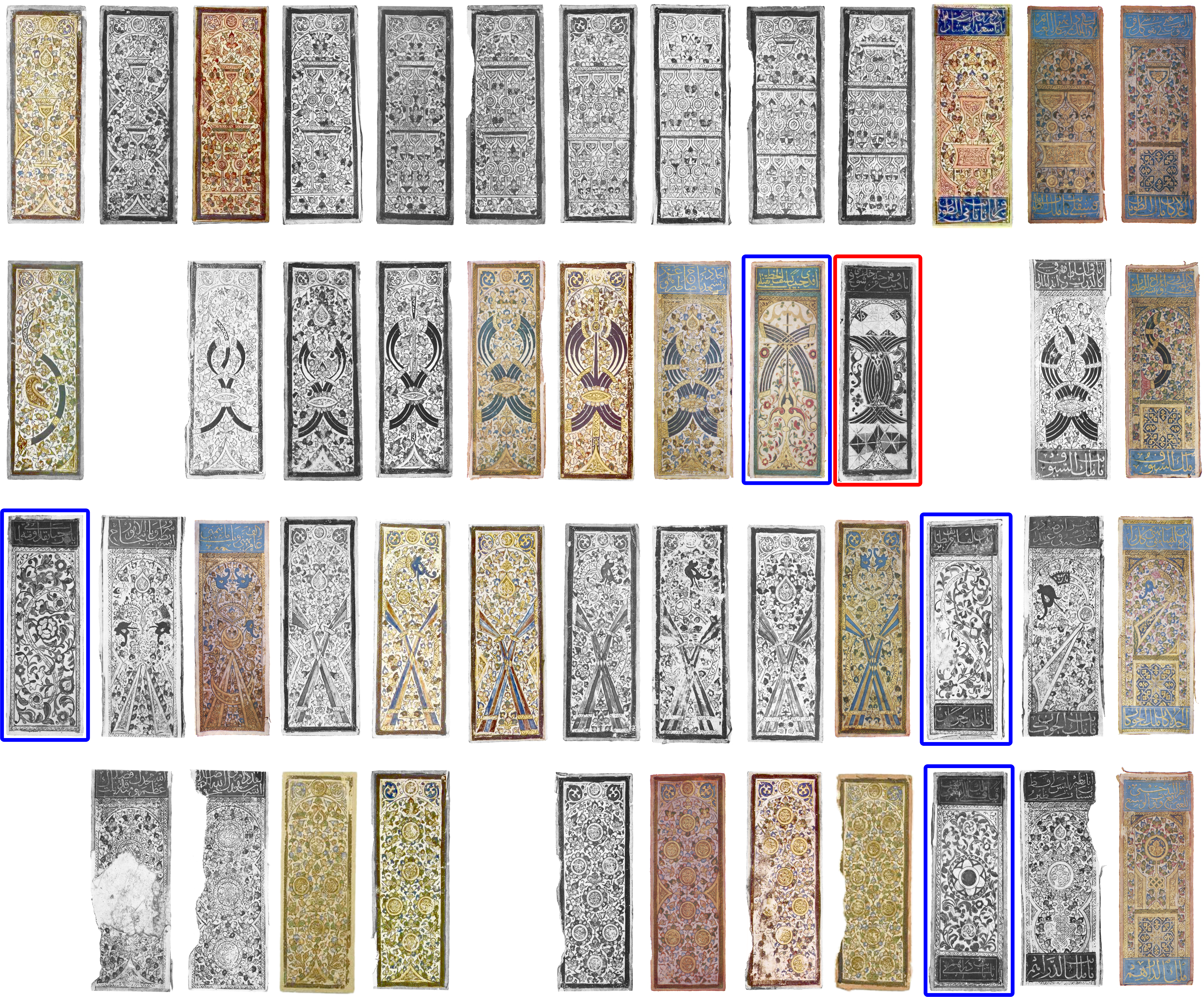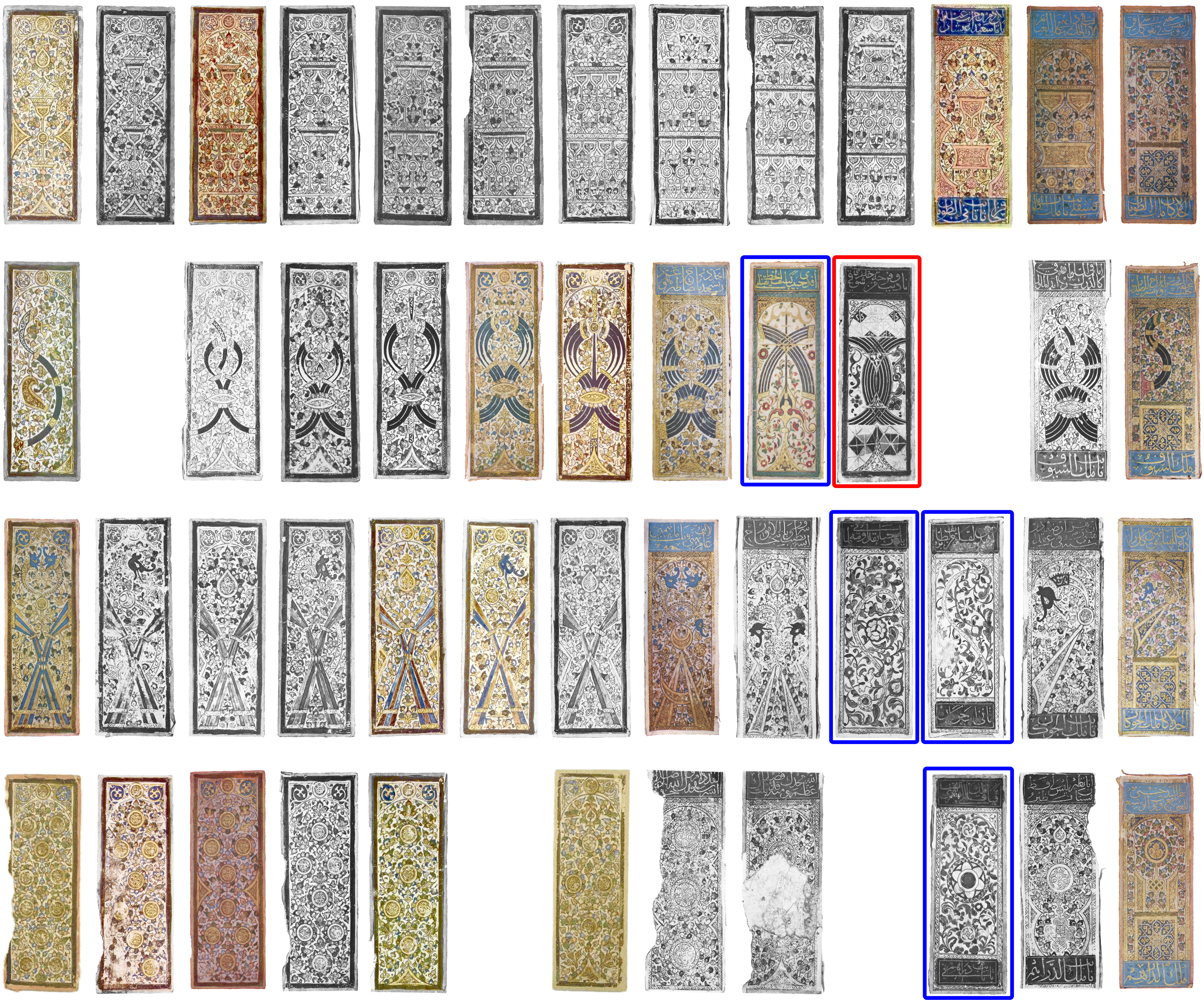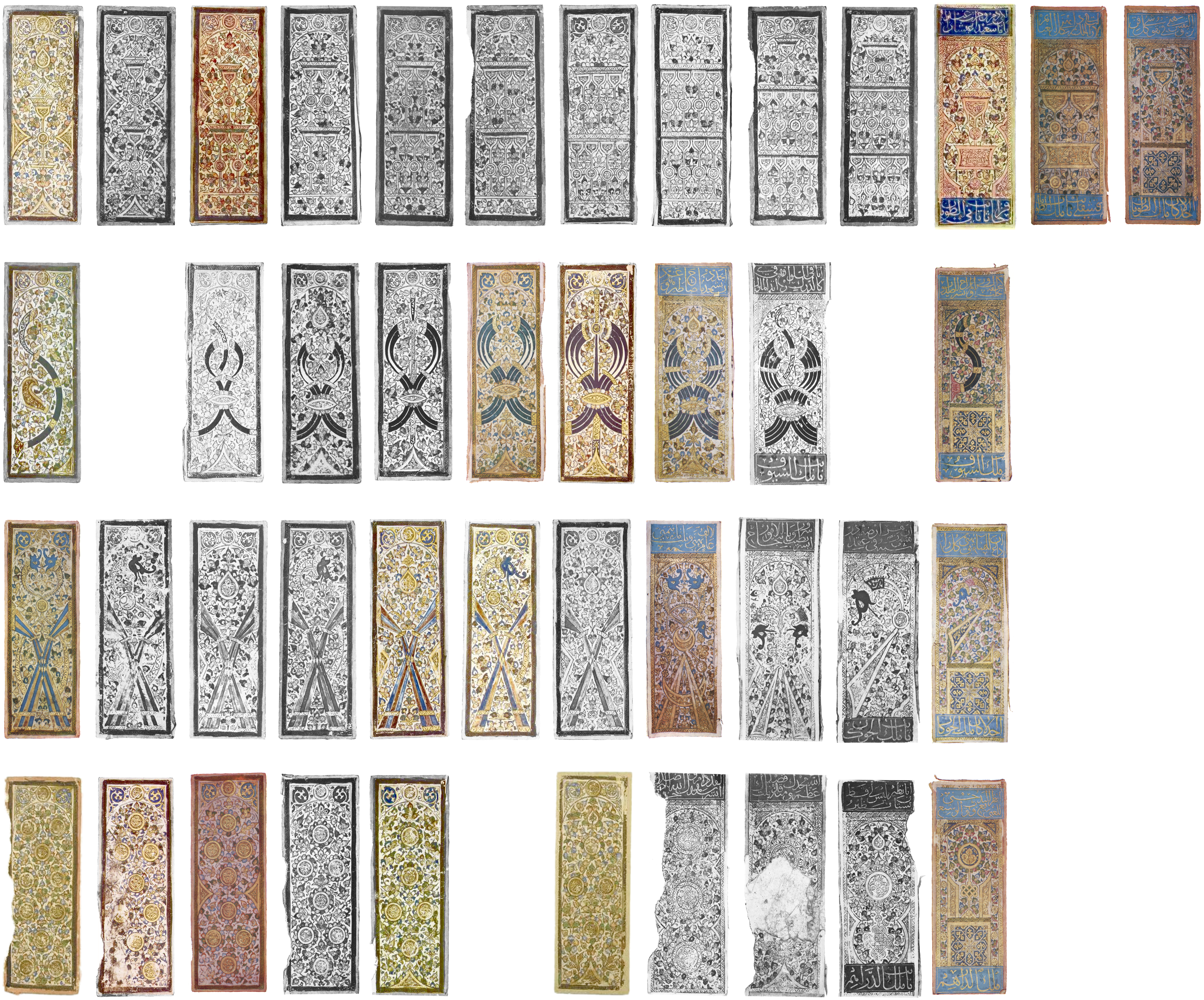Here is a somewhat-new theory about the so-called “Mamluk playing cards” which I think shines light on the way the deck was constructed.
Firstly we simply remove the “replacement cards” to see what happens and secondly, this leaves us with something that is structurally similar with known Chinese decks of the same period.
As far as I know this connection hasn’t been suggested elsewhere yet. (John Berry does note the possibility of a 46-card deck in his 2001 IPCS article “Mamluk Problems” (IPCS vol. 30 no. 3, p. 139) but doesn’t pursue this further.) However, most of the other information here is already in other sources if you dig around, so there is not much new here.
To start with, here is the (I guess we can call “traditional” at this point) supposed structure of the deck, according to Dummett & Abu-Deeb (”Some Remarks on Mamluk Playing Cards”, 1973).
The deck is arranged to match that of the standard western deck with 1-10 in each suit and JQK (equivalents, really Kings and Deputies) highest. In the image below the cups are at the top, followed by swords, polo-sticks, then coins. The higher-ranking cards are at the right.
The positions of the “King” and first and second “Deputies” are well-known since they bear a bottom banner (written over the top of the base card imagery) which labels them. The remainder of the pip cards are easy to infer by the number of objects on the card.
The cards that have been added as “replacements” according to Dummett are those highlighted in blue and red (two different styles of card appear).

Now, Dummett already notes that the coins and polo-sticks suits seem to be reversed (as they are in many known games), since the bottom three cards of each suit are marked with the poetry banners on top. The feature of a reversed coins suit is also well known in Chinese 3/4-suited money card decks. If we reverse both lower suits we obtain this structure:

Now things are becoming clearer. We can see that the top three cards in each suit after the King & Deputies are all marked with poetry banners. However, the cups suit is special and only the King & Deputies have poetry.
Now I think that the function of the “replacement” cards is more obvious. These are not replacements but insertions intended to convert a deck that has a structure more similar to a 15th-century Chinese deck (more on this below) into one that is more similar to the later European-style decks. That is, the original deck as constructed by the artist did not have deputies. This explains why the bottom banners which label both the kings and deputies were added later and were not part of the deck as made.
The insertions of these cards were seemingly done a little sloppily, as one might have expected the additional cards to become the Deputies, but:
- the additional 9 of swords displaces the existing 9 of swords which becomes a deputy, instead of being added as a deputy
- similarly, the added 1 of polo-sticks displaces the existing 1 of polo-sticks which becomes a deputy, and the added 1 of coins (which is missing) displaces the existing 1 of coins
Note that the sole card of the “tertiary” deck (10 of swords) is either a pure replacement for a missing card; or, it displaced the 10 of swords which was turned into the 2nd deputy and which is now missing.
The actual face-values of the deputies do not actually matter since the written-on labels are used to override the values of the cards. It is worth noting that the two added cards which are deputies (the 2nd Deputy of polo-sticks & coins) actually have space for the name of the card to be written on the bottom, so perhaps these were drawn from a later deck which already had deputies added. Dummett also notes that these two cards have names which are slightly different than all the others, dropping the al- article before the suit name.
If we remove these additional cards which were used to add deputies to the deck we obtain this structure which could be an older 46-card form of the deck:

The coins and polo-sticks rank in reverse order from 10-1-K, then the swords and cups rank in ascending order from 1-10-K, and the cups has two additional cards. Here we should ignore the bottom labels of the cards since they were added later.
The Kings and top 3 cards of each suit are marked at the top with poetry banners, and there is space on the card for these to be present. However, they have been painted over when the bottom labels were added. They may originally have had different poems or labels on them.
The feature which stands out here is that the cups suit is different from the others and unusually has two extra cards, but I think that it gives a link to Chinese playing cards of the same era. Note that when the two extra cards were turned into deputies they were also given names, and these are the only two cards which have given names in the Mamluk deck.
💡 As a note, the two extra cards are named:
- (2nd) قشقلي (qsẖqlī) [or maybe قشقاي (qsẖqạy)?]; in the Chinese deck described by Lu Rong the position of this card is held by 武松 Wǔ Sōng, also known as “traveller” or “pilgrim” 行者 xíngzhě
- (3rd) قراجا (qarājā) (apparently by about 1350 this was a name reserved for Europeans or Anatolians—modern Turkish Karaca); in the Chinese deck this is held by 阮小五 Ruǎn Xiǎowǔ
We know from Lu Rong’s writing in the late 15th century (around the same era as this deck) that Chinese money decks of the time had two additional cards above the highest card in the 10s of myriads suit (perhaps equivalent to the cups, which are called طومان [ṭūmān]=myriads in the Mamluk deck). The deck structure is not identical since the Chinese deck which Lu Rong describes ran 1–9 in each suit (2–10 in myriads) and didn’t have “Kings”, but this feature of two additional cards in the highest suit is common to both. We could then consider that both the 15th-century Chinese and Mamluk deck might be derived from some older ancestral deck.
Of course, the question is then raised: where did the deputies come from? Is it possible they were somehow developed in Europe and then re-imported back into the Mamluk decks, or were they a later purely Mamluk invention added to this deck?